Jaipur’s newly-opened Museum of Meenakari Heritage pays tribute to Europe’s centuries-old enamel art form that found loving nurturers in Rajasthan’s master artisans
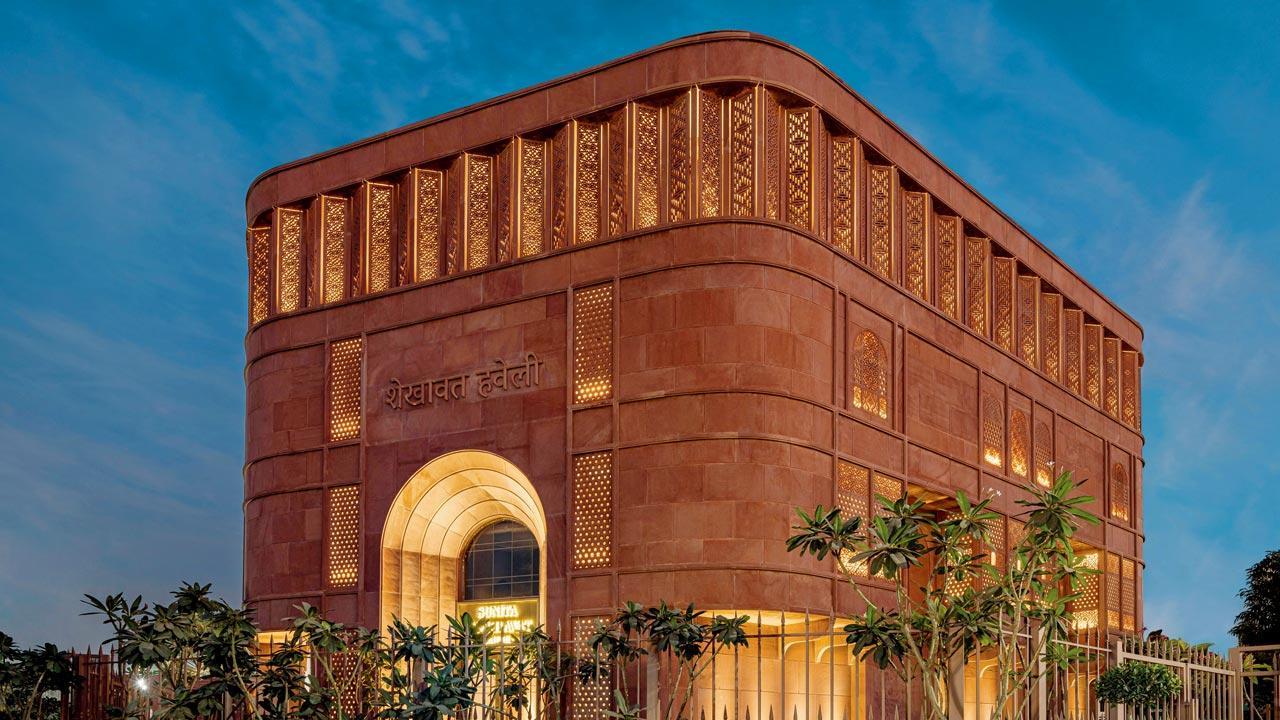
The Museum of Meenakari Heritage (MOMH) in Jaipur’s Shekhawat Haveli is a state-of-the-art-permanent gallery, curated by Dr Usha R Balakrishnan, tracing the history of enamelling from Renaissance Europe to India. Pics Courtesy/Sunita Shekhawat
 Nothing prepares you for the sensory overload and history lessons when you drive past the old gates of Parkota on one side and a bustling commercial centre on the other, en route to the Museum of Meenakari Heritage (MOMH).
Nothing prepares you for the sensory overload and history lessons when you drive past the old gates of Parkota on one side and a bustling commercial centre on the other, en route to the Museum of Meenakari Heritage (MOMH).
Among the diamonds, rubies, spinels, sapphires and emeralds glistening in custom-built acrylic cases arranged around a circular room are eye-catching rarities of enamelling that celebrate techniques ranging from plique-à-jour to champlevé, cloisonné and basse-taille. More compelling, however, is the museum’s special emphasis on the impact that Indian craftsmen had on the evolution of 16th century meenakari art. For these elements were not just imported into India; they were embraced, mastered, and reinterpreted by Indian meenakars—adding a distinct touch of their own, morphing European techniques and colours into a unique Indian idiom. “The exchange of knowledge was not one-way; it was a dance of learning and teaching, giving and taking, imbibing and creating, which led to the birth of a unique genre of art that we now recognise as Indian meenakari,” says Dr Usha R Balakrishnan, a prominent jewellery historian. It is these long, rich traditions that inspired fine jewellery designer Sunita Shekhawat to launch MOMH, a privately-owned permanent gallery that resides on the ground floor of the three-storeyed Shekhawat Haveli flagship designed by Studio Lotus. Entry is by-appointment to the minimal space characterised by dramatic spotlights and shadows designed by Siddhartha Das Studio. But it is Dr Balakrishnan’s curatorial focus that encapsulates the diverse epochs and geographical scope of this rare and sumptuous art, presented for the first time within a uniquely global context.
ADVERTISEMENT
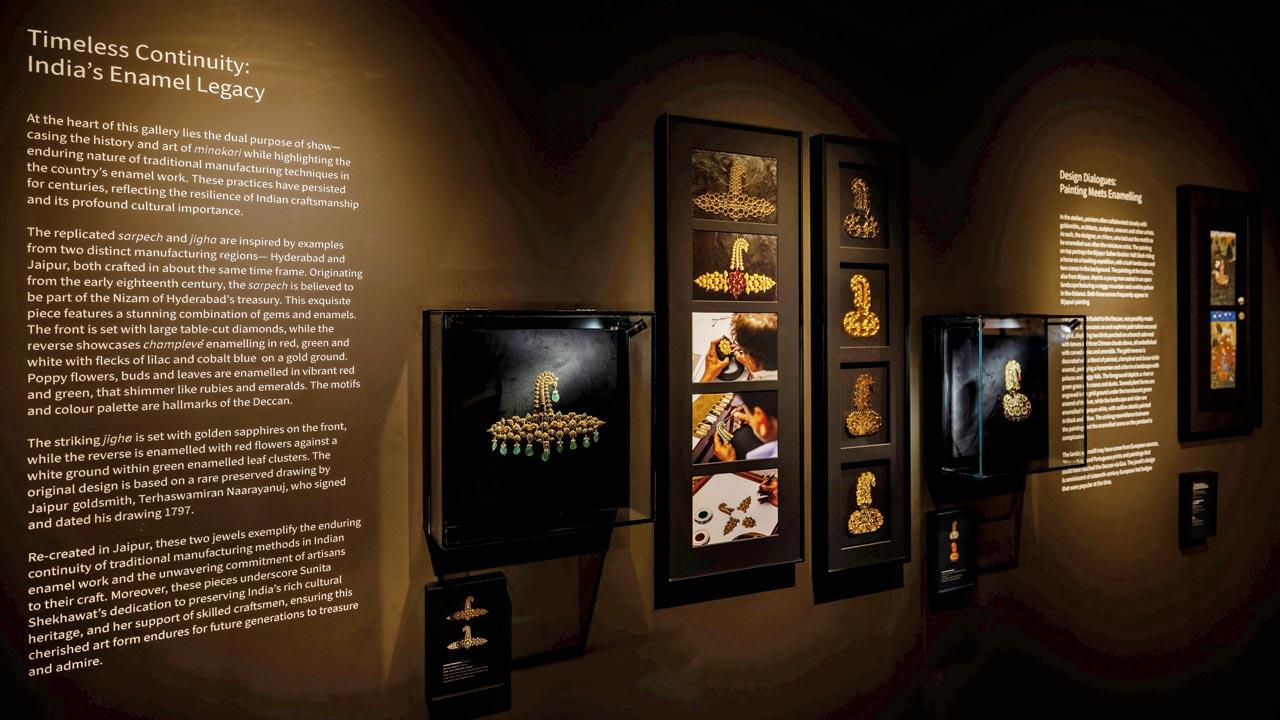
The Museum of Meenakari Heritage (MOMH) in Jaipur's Shekhawat Haweli is a state-of-the-art permanent gallery, curated by Dr Usha R Balakrishnan, tracing the history of enamelling from Renaissance Europe to India. Pics Courtesy/Sunita Shekhawat
“Dreams can be strange,” Shekhawat reasons, “because, as soon as we realise one dream, we move on to the next. When I launched my brand in 1999, I only dreamed of making beautiful, timeless pieces; never thought that I would open a museum!”
Shekhawat, whose 25-year-long career has seen her offer meenakari a contemporary vocabulary, tells mid-day that in historic designs, “we don’t see champa [frangipani] or bougainvillea floral motifs. So, when we talk of these blossoms, we are talking of the future.”
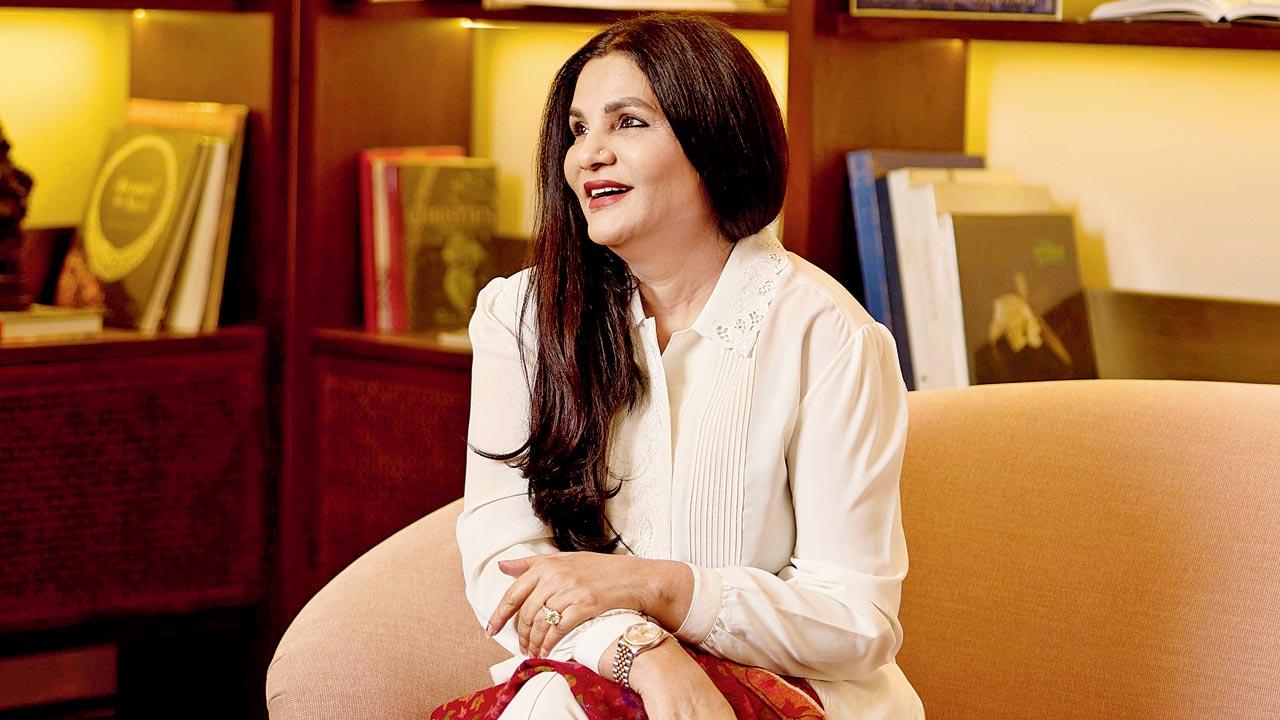 Sunita Shekhawat
Sunita Shekhawat
In the last 10 years, her children Niharika and Digvijay have joined the business that operates collaboratively with Jaipur’s artistic lineage. “We still work with karigar families who first moved to Jaipur when [the erstwhile monarch of Amer] Maharaja Sawai Jai Singh II invited craftsmen from across the country to make Jaipur their home.”
Garden of Eternal Spring: The Art of Indian Enamelling, the collection at MOMH consists of 300 images obtained from 15 premier museums, private collections and auction houses worldwide, but also includes 120 reproductions of enamelled artefacts by the Shekhawat atelier that serve as a repository of archival motifs, setting styles and oral histories related to the craft.
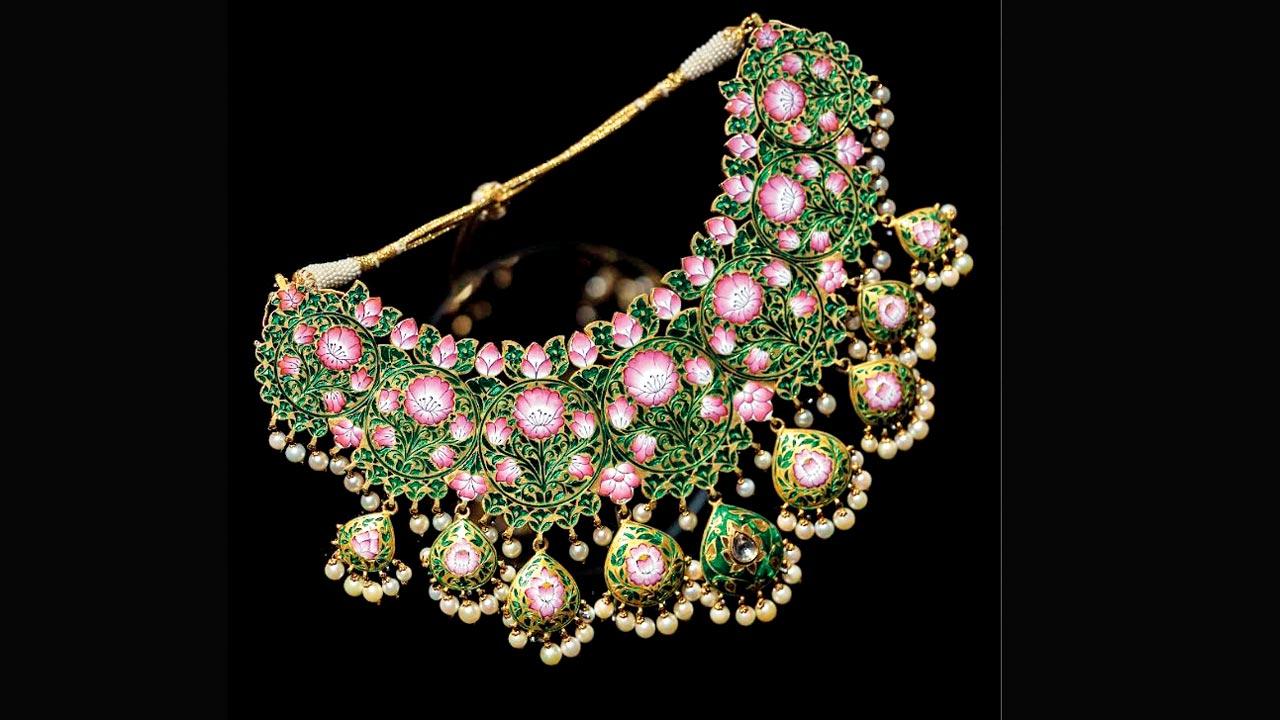 A necklace showcasing champlevé technique where the jewellery’s metal surface is engraved, creating troughs and channels which are filled with powdered enamel and then fired. The piece is intricately embellished with Gulabi Meenakari to give the lotus or padma motif emphasis, together with a string of South Sea pearls giving the adorer a synaesthetic feeling
A necklace showcasing champlevé technique where the jewellery’s metal surface is engraved, creating troughs and channels which are filled with powdered enamel and then fired. The piece is intricately embellished with Gulabi Meenakari to give the lotus or padma motif emphasis, together with a string of South Sea pearls giving the adorer a synaesthetic feeling
Besides its obvious appeal for jewellery fans, Indophiles and aficionados of antique craftsmanship, it also acts as a space of craft learning. “It would be amazing to take this exhibition like a travelling show around the country and overseas too, to lay bare an intimate bridge connecting the past, present and future of meenakari.”
The sultan’s jewels
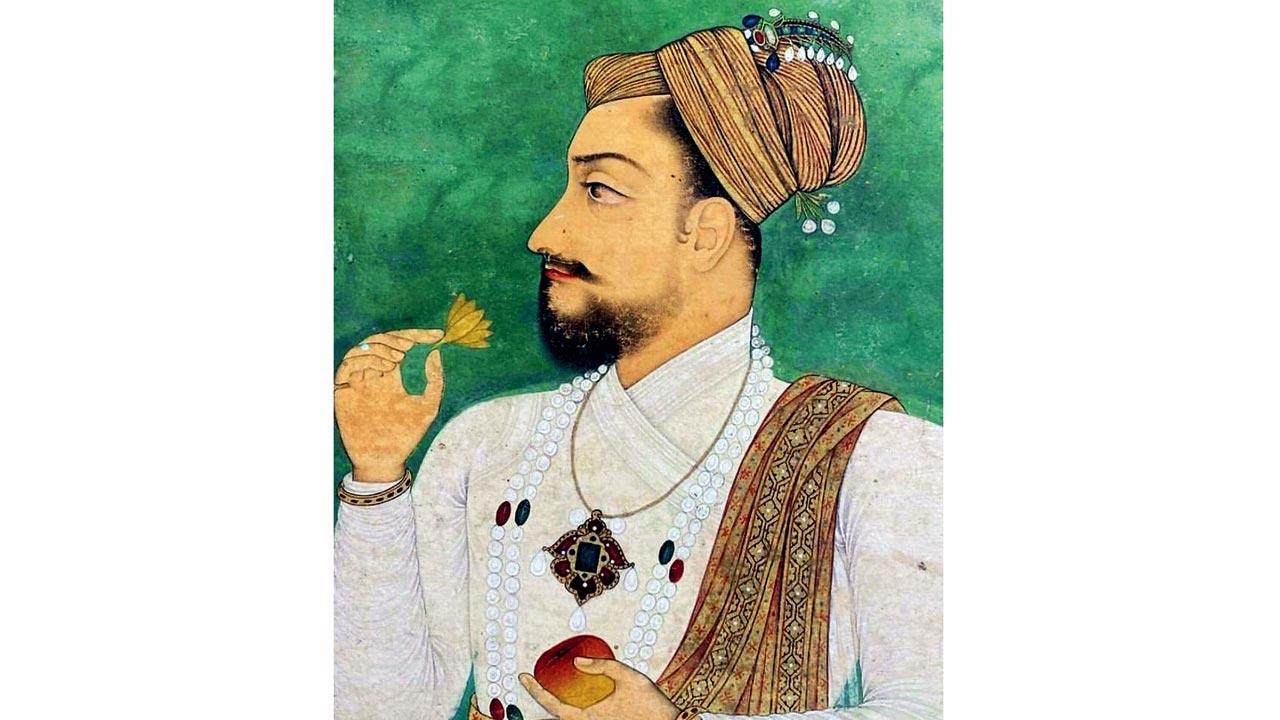 Portrait of a nobleman identified as Muhammad Adil Shah, Bijapur, c. 1645
Portrait of a nobleman identified as Muhammad Adil Shah, Bijapur, c. 1645
A portrait of a nobleman identified as Muhammad Adil Shah, Bijapur, c. 1645, depicts him wearing an array of jewels; rings, a gem-set bangle, kalgi (turban ornament), and two rows of pearls interspersed with spinel and emerald beads. Of particular interest is the gold chain suspending an impressive fan-shaped pendant. Historians have described it as a jewel set with an emerald surrounded by spinels. But when Dr Balakrishnan studied this miniature portrait with a magnifying glass, she realised that there was something unusual, “because it didn’t look like rubies”. “It became evident that the rectangular emerald is actually surrounded by enamel petals and the gold areas decorated with a stippled effect [to engrave by means of dots and flicks]. This decorative enamel technique of placing a white dot in the middle of red enamel, as well as the stippled gold decoration appears in 16th century commesso pendants of France… one of the many influences that travelled from Europe to India.”
 Sketch and reproduction by Sunita Shekhawat atelier
Sketch and reproduction by Sunita Shekhawat atelier
Pendant with prancing horse

This pendant by a German or Spanish artist, 1600-1625, features a spirited prancing horse decorated with gold, diamonds, rubies, pearls and white enamel, utilising the émail en ronde bosse (enamel in the round) technique. Although this method of combining enamel with gemstones is uncommon in India, the reproduction demonstrates remarkable accuracy and flawless execution by Sunita Shekhawat’s team of artisans, closely resembling the original piece. “This piece demonstrates just how meenakari has seen, what we call, the Guru-Shishya parampara. It is in the DNA of Indian artisans. All they need is a patron, followed by a reference image and materials to replicate with detail and accuracy.”
Crowning jewels
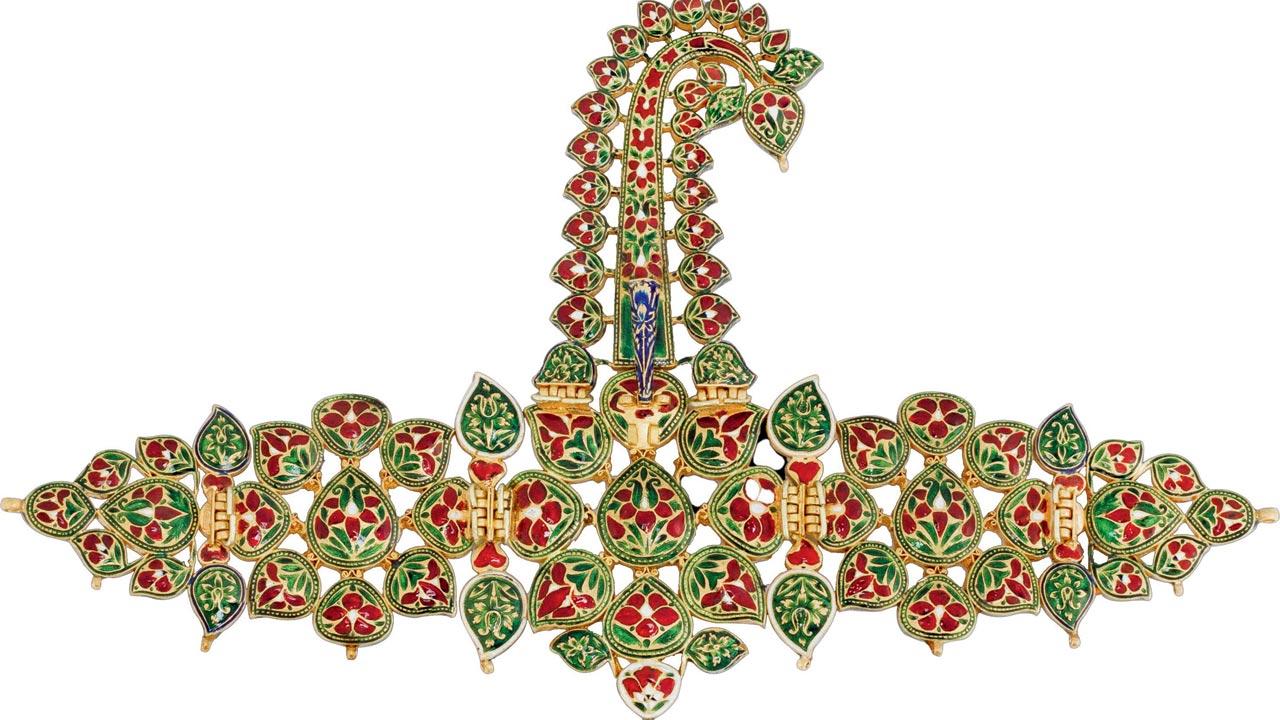 Reverse
Reverse
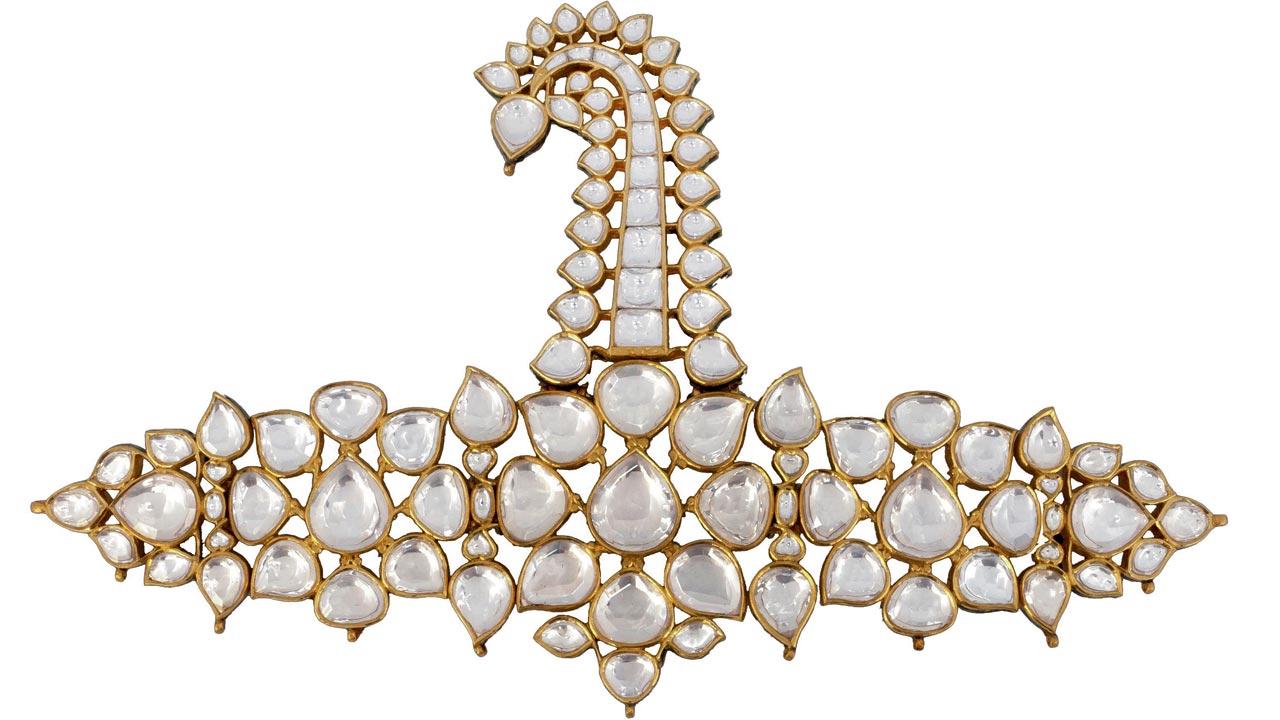 Front
Front
Originating in the early 18th century, the sarpech (turban ornament) is believed to be part of the Nizam of Hyderabad’s treasury. This exquisite piece, a reproduction by Sunita Shekhawat atelier, features a striking combination of gemstones and enamels. The front is set with large table-cut diamonds, while the reverse showcases champlevé enamelling (a technique that fuses a powdered glassy material into a recess in a metal surface through the application of heat) in red, green and white with flecks of lilac and cobalt blue on a gold ground. Poppy flowers, buds and leaves are enamelled in vibrant red and green, that shimmer like rubies and emeralds. The motifs and colour palette are hallmarks of the Deccan. “If I had to identify pieces that were tough to reproduce from photographs, it would be the sarpech and jigha. Additionally, they were also set on 98 per cent gold purity. Yet another challenge was to convince artisans to work on sets that took 10 times the effort and time of a normal piece,” shares Sunita Shekhawat.
1719
 Reverse and Front
Reverse and Front
Year when famed Jaipur goldsmith Terhaswamiran Naarayanuj signed and dated a rare drawing of a jigah (turban ornament). The ornament, reproduced by the Sunita Shekhawat atelier, is set with golden sapphires on the front, while the reverse is enamelled with red flowers against a white ground with green enamelled leaf clusters
Painstaking process of detailing

Creating enamelled jewellery involves a series of processes and stages, each demanding specialised skills, technical knowledge and teamwork. The sequence begins with the designer (nagash or chitera) who carefully arranges motifs such as flowers, leaves and birds on a small, irregular piece of metal. The piece then moves to the goldsmith (sonar), who creates the metal moulds known as the ghaat. Next, the engraver (gharaiwala or khodnaker) outlines the design details and carves out areas designated for enamel colours. The enameller (meenakar or the rangsaz) then prepares the enamel paste, applies the colours, and fires them in a kiln. Enamel colours are built up layer by layer, fired in order of hardness due to their varying melting points. The heating and cooling processes are crucial to prevent cracking and to achieve the desired translucency. Finally, the gem setter (kundansaz) places the gems on the front, and the piece is polished. Colour recipes were closely guarded within families and passed down orally through generations.
Not from Persia, but France
“Enamelling didn’t come into India from Persia, that’s a misnomer,” Dr Usha R Balakrishnan says. It arrived in India via two main routes: the Northern land route originating in Limoges, France, a major centre for painted enamelling in Europe. From here, it travelled to Persia where it was indigenised using Persian craftsmanship and then journeyed to Lahore, Sindh, Awadh, finally culminating in Banaras in the delicate art of Gulabi Meenakari. But low patronage and demand led to meenakars passing into oblivion. “After a gap of half a century, a handful of craftsmen have started practicing again, so perhaps there is a revival,” she adds.
To Mughal courts via Goa
 Dr Usha R Balakrishnan
Dr Usha R Balakrishnan
India’s Southern Sea route connected Portugal, Spain, France, the Netherlands, Germany and Italy—all thriving enamel manufacturing centres in the 16th century—to Goa. “With the arrival of Vasco da Gama and the capture of Goa by the Portuguese in 1510, Europe’s doors opened to India. Goa turned into an important gem trade hub since it was a flourishing port and a prominent emporium on the West coast of India,” Dr Balakrishnan says. The Goa Inquisition led artisans to move to the Deccan, Hyderabad, Awadh (Lucknow) and the Mughal courts in Agra, Delhi and Lahore (part of undivided India). By the late 18th century, Jaipur, Banares, Kangra and Kullu in Himachal Pradesh, Kashmir, Multan and Sindh (in present-day Pakistan) had emerged as important enamelling hubs, each boasting of a signature palette of colours and motifs.
Pendant Reliquary cross
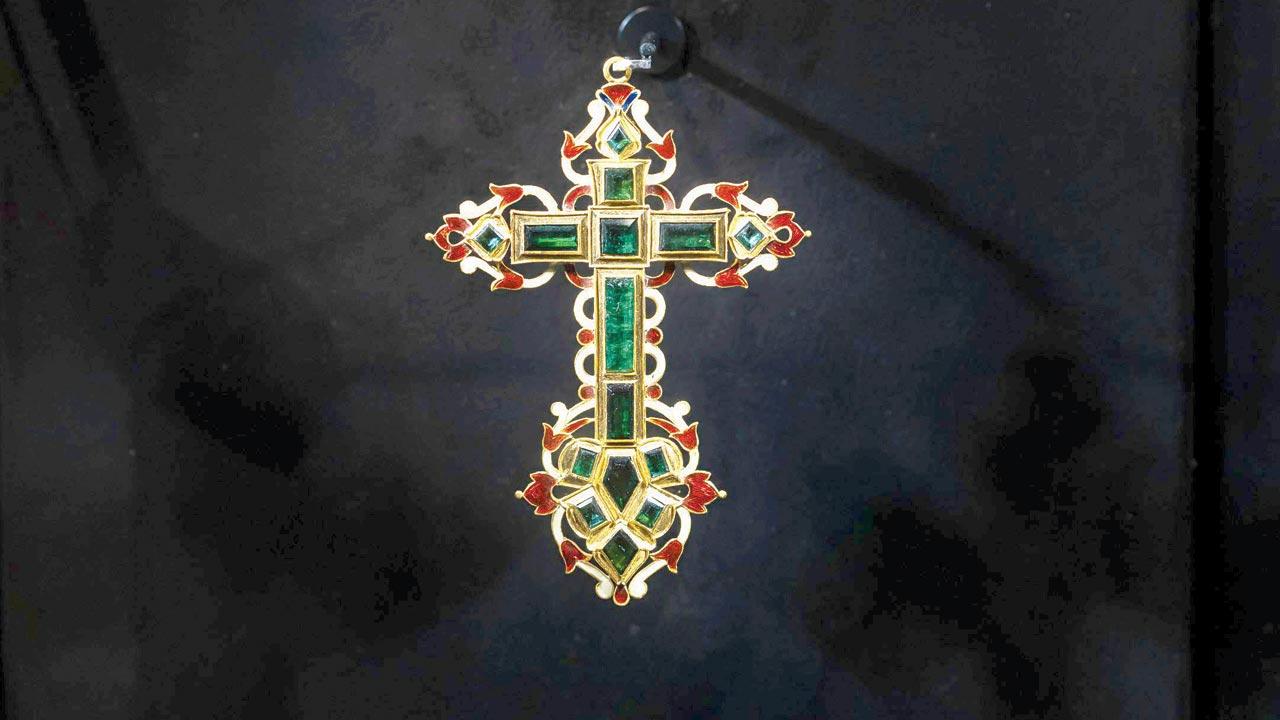
This cross is a replica of Goldsmith’s art, Italy, a 17th century reliquary crucifix pendant in gold, emeralds, enamel. Missionaries would have brought such expressions of Christian faith to India. Reproduction by Sunita Shekhawat atelier. Dr Balakrishnan hopes that MOHM becomes a catalyst for jewellery pieces such as this one that are hidden away in private collections, for collectors to consider sharing them as active participants in the museum experience. “Let’s share this heritage with the world,” she urges.
Rua Direita was Goa’s Zaveri Bazaar
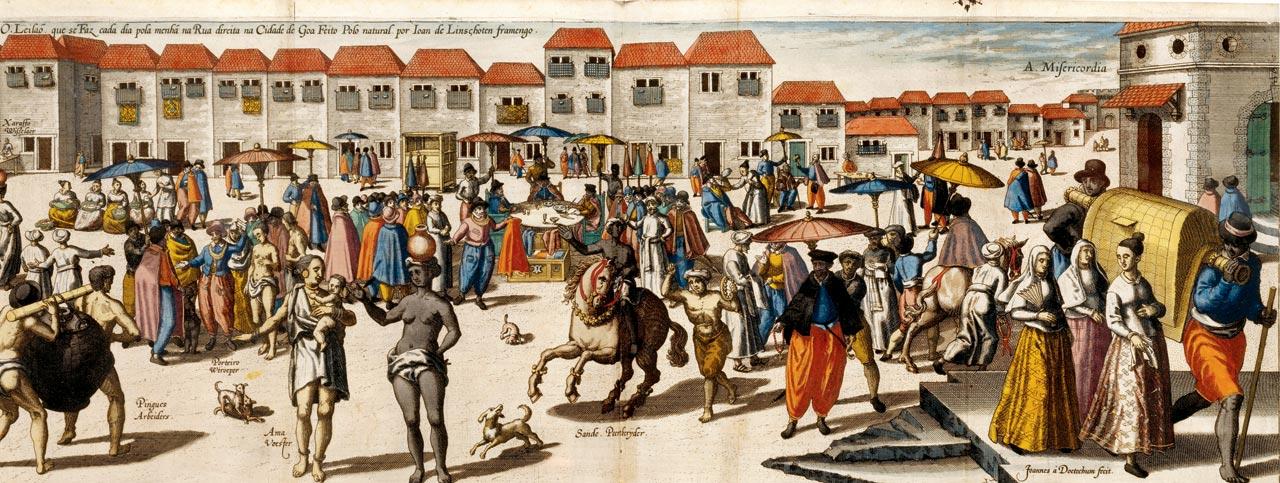
Portuguese Goa was bustling and cosmopolitan with a diverse population of various nationalities seeking fortune. The Rua Direita was crowded with merchants selling goods from China and Europe as well as abundant quantities of diamonds, rubies, emeralds, topaz, pearls, and semiprecious gems. On both sides of the street, lapidaries, goldsmiths, bankers, and the best artisans, both European and Indian, could be found. “Rua Direita,” Dr Balakrishnan explains, “was the main thoroughfare of Goa—akin to Mumbai’s Zaveri Bazaar—leading right from the port’s entry point to the main church.”
Dummy’s guide to terms and techniques: Language of the art
Acquaint yourself with Misal, a local colour terminology devised by Indian enamellers
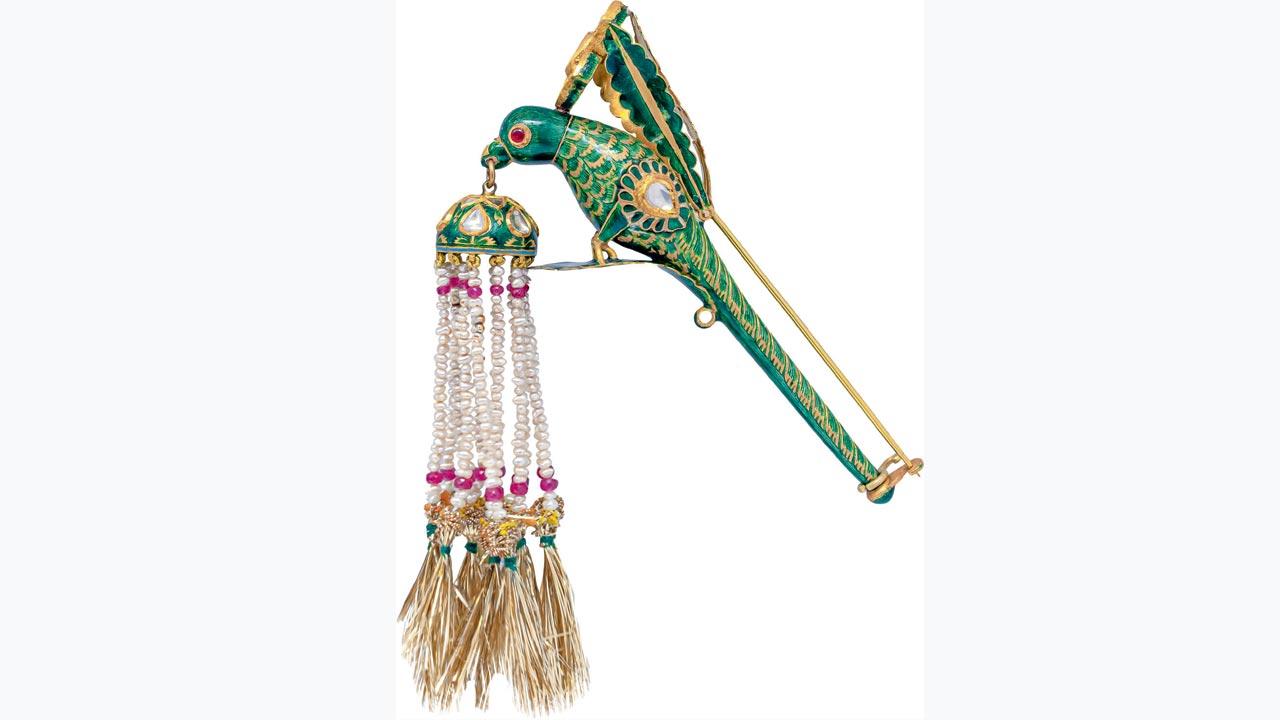
. Kachnar ki Patti or Tote ka Par: Translucent green compared to the feathers of the Indian parrot and the leaf of the kachnar or orchid tree.
. Khoon-e-Kabouter: Literally translated to “pigeon blood”, it is a complex deep colour that became a benchmark for the finest enamelling skills.
. Gardan-e-Taus: A translucent blue colour of the peacock’s neck.
. Lajvardi: The opaque blue of lapis lazuli.
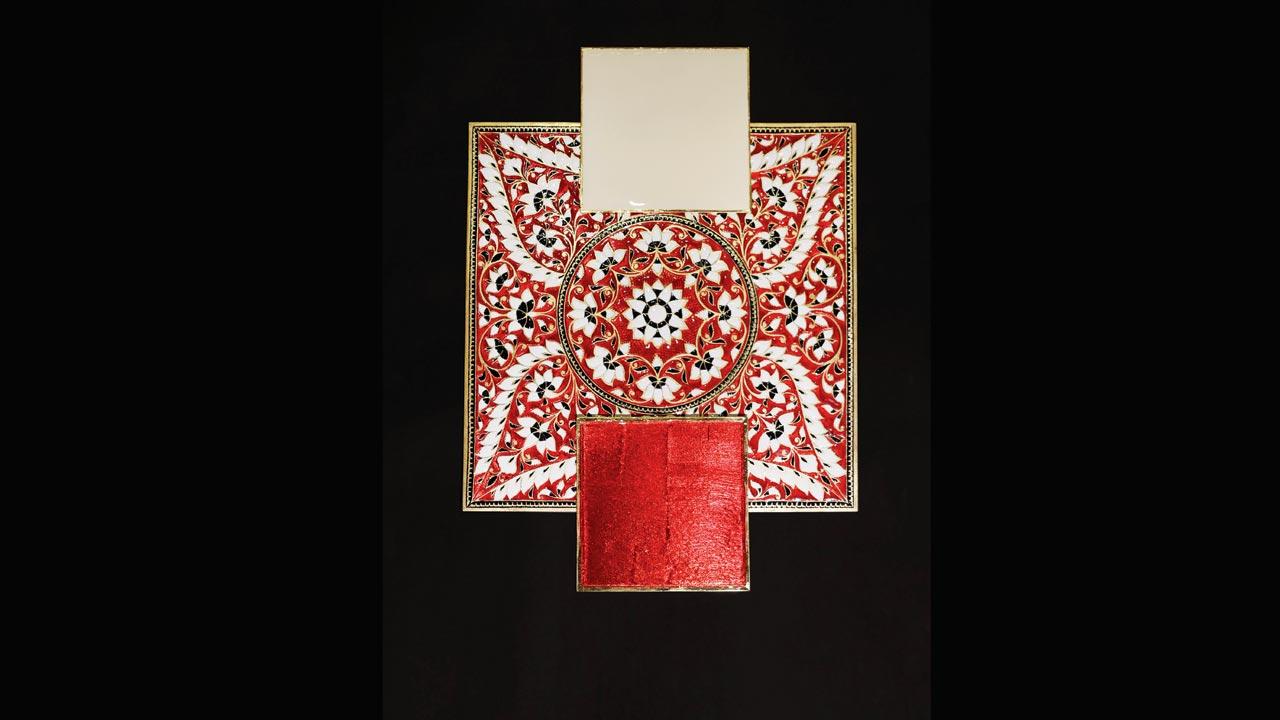
. Lal Zamin: Local technique names speak of lands of colour and glory such as Lal Zamin, a chased and engraved gold base with red translucent enamel dominant, or Nil Zameen, a chased and engraved gold base with blue translucent enamel dominant.
. Safed Chalwan: A chased and engraved gold base with opaque white enamel outlining other translucent colours.
. Ab-e-Lehr: Gold base asymmetrically chased and engraved in the form of waves with transparent enamel.
. Boond Tila: A chased and engraved gold base with translucent enamelling.Courtesy: Sunita Shekhawat
 Subscribe today by clicking the link and stay updated with the latest news!" Click here!
Subscribe today by clicking the link and stay updated with the latest news!" Click here!








